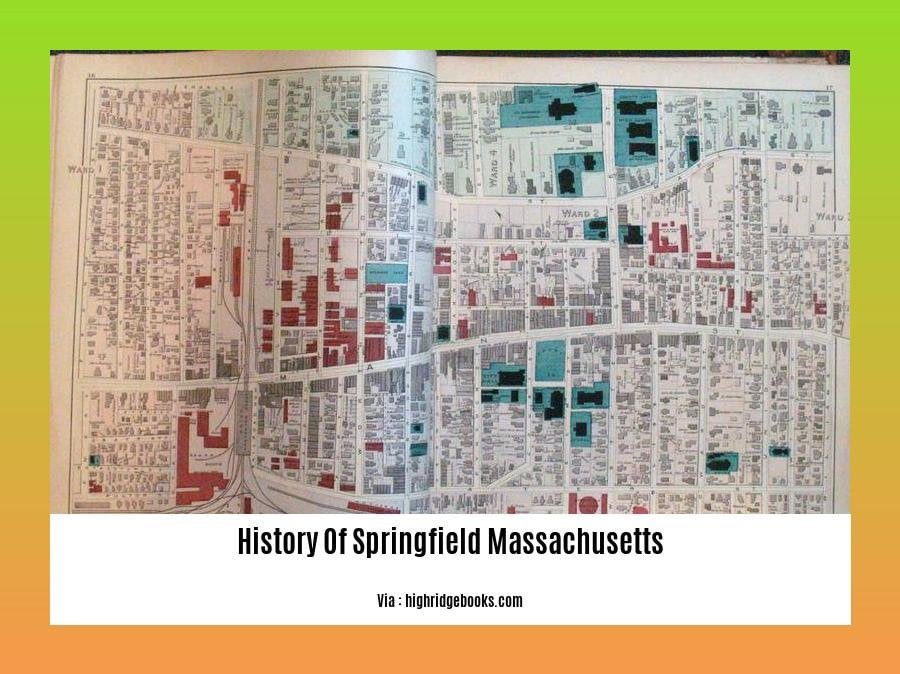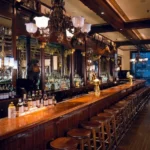Embark on a captivating journey through time as we delve into [- A Historian’s Insight into the History Of Springfield Massachusetts]. Join us as we uncover the fascinating narrative of this remarkable city, its architectural treasures, evolving socio-economic landscape, and indelible cultural legacy. From its humble beginnings to its prominent role in shaping Massachusetts and beyond, Springfield’s story is a testament to the enduring spirit and transformative power of urban America.
Key Takeaways:
- Springfield is the oldest Springfield in the Americas, established in 1636.
- George Washington selected Springfield for the Springfield Armory during the American Revolution.
- Springfield played a role in Shays’ Rebellion.
- In the 19th century, Springfield became an industrial hub, known for various manufactured goods.
- Currently, healthcare, insurance, and services sectors drive Springfield’s economy.
History Of Springfield Massachusetts

Springfield, Massachusetts, holds a significant place in American history. Allow me to shed some light on its captivating journey.
Birth and Revolutionary Spirit
Springfield, founded in 1636, became the first settlement bearing its name in the New World. During the American Revolution, George Washington strategically chose Springfield as the site of the renowned Springfield Armory due to its vital location. The city also witnessed Shays’ Rebellion, a pivotal event in American history.
Industrial Revolution and Beyond
The 1800s marked a transformative era for Springfield. It blossomed into an industrial powerhouse, producing everything from paper and railroad coaches to locomotives and ice skates. In modern times, Springfield’s economy has shifted towards services like healthcare and insurance.
Architectural Treasures
Springfield boasts a rich architectural tapestry. The Old First Church, built in 1819, stands as a testament to its colonial heritage, while the Victorian-era Merrick House offers a glimpse into its affluent past. The Springfield Armory National Historic Site preserves the city’s industrial legacy.
Cultural Milestones
Springfield has played a pivotal role in American culture. The city’s connection to Dr. Seuss, the beloved children’s author, is celebrated at the Eric Carle Museum of Picture Book Art. Springfield also holds the distinction of hosting the Basketball Hall of Fame, honoring the sport’s legendary figures.
To learn more about the history of Springfield Mass, click here.
Check out the Springfield Mass Activities and they will blow your mind.
Read more about Springfield Mass Times by clicking the link.
To know about the History Of Springfield, visit now.
Architectural Heritage and Landmarks

Springfield’s architectural heritage is a testament to its rich past and enduring legacy. From the stately Old First Church, a symbol of its colonial roots, to the iconic Springfield Armory National Historic Site, a reminder of its industrial prowess, Springfield’s buildings tell a story of evolution and resilience.
The Merrick House, a Victorian-era mansion, showcases the city’s architectural grandeur. Its intricate details and opulent interiors transport you to a time of elegance and prosperity. The Old First Church, established in 1637, is the oldest surviving church in the Connecticut River Valley, a testament to the city’s enduring religious tradition.
Springfield’s architectural heritage is not confined to the past. The Basketball Hall of Fame, a modern masterpiece, celebrates the city’s love for the sport. Its sleek design and interactive exhibits honor the legends of the game.
Key Takeaways:
- Springfield’s architectural heritage reflects its colonial, industrial, and modern roots.
- The Old First Church, Merrick House, and Springfield Armory National Historic Site are iconic landmarks that tell the city’s story.
- The architectural legacy continues to shape Springfield’s identity and attracts visitors from far and wide.
Citations:
Socio-Economic Transformation and Immigration
Springfield, Massachusetts, has undergone significant socio-economic transformation throughout its history. The city’s early economy was based on agriculture and trade, but it later became a major industrial center. In the 20th century, Springfield faced economic challenges as its manufacturing base declined. However, the city has since diversified its economy and focused on tourism and redevelopment efforts.
Immigration has also played a major role in Springfield’s history. The city has been a destination for immigrants from all over the world, including Ireland, Poland, Italy, and Puerto Rico. These immigrants have brought their own cultures and traditions to Springfield, contributing to the city’s rich tapestry.
Key Takeaways:
- Springfield’s economy has undergone significant socio-economic transformation over time, from agriculture to manufacturing to tourism.
- Immigration has played a major role in Springfield’s history, with immigrants from all over the world contributing to the city’s culture.
- Springfield is a vibrant city with a rich history and a diverse population.
Sources:
Cultural and Artistic Legacy
Springfield, Massachusetts, has a rich cultural and artistic legacy deeply woven into the fabric of its history. From its early beginnings as a trading post to its transformation into an industrial powerhouse, the city has nurtured a vibrant cultural scene that continues to thrive today.
The Birth of a Literary Giant
Springfield is the birthplace of Theodor Geisel, better known as Dr. Seuss. The beloved children’s author’s legacy is celebrated at the Eric Carle Museum of Picture Book Art, where visitors can immerse themselves in the whimsical world of Geisel’s creations.
A Symphony of Sounds
Springfield is also home to the Springfield Symphony Orchestra, one of the oldest orchestras in the United States. Founded in 1935, the symphony has a long history of bringing the joy of classical music to the community.
A Canvas of Art
The city boasts several art museums, including the Springfield Museums, which house an eclectic collection ranging from ancient Egyptian artifacts to contemporary paintings. The museum also features a planetarium and a science museum, making it a hub for both art and scientific exploration.
Key Takeaways:
- Springfield is the birthplace of Dr. Seuss, whose legacy is celebrated at the Eric Carle Museum of Picture Book Art.
- The Springfield Symphony Orchestra is one of the oldest in the United States.
- The city is home to several art museums, including the Springfield Museums, which offer a diverse collection of art and science exhibits.
Sources:
FAQ
Q1: When was Springfield, Massachusetts founded?
A1: Springfield was founded in 1636 as Agawam Plantation.
Q2: Why was Springfield chosen as the site of the Springfield Armory?
A2: Springfield was chosen for its central location, making it an ideal supply depot for the Continental Army during the American Revolution.
Q3: What industries played a significant role in Springfield’s development?
A3: Springfield’s economy was heavily reliant on the firearms, paper, and automobile industries.
Q4: What was the Springfield Plan?
A4: The Springfield Plan was an early urban renewal program implemented in 1911 to address overcrowding and improve living conditions.
Q5: What are some of the challenges Springfield has faced in the 21st century?
A5: Springfield has faced economic challenges, including population decline and a shrinking tax base.
- Sept 31 Myth: Unveiling Calendar Secrets - March 18, 2025
- How Long & Till December 18, 2025: Accurate Countdown Guide - March 18, 2025
- Discover Japanese Artists: A Complete History - March 18, 2025
















